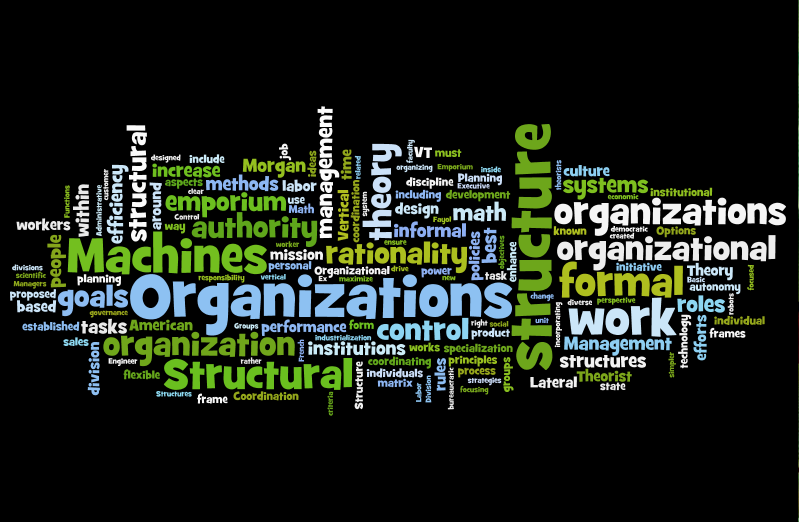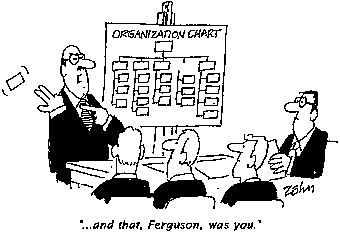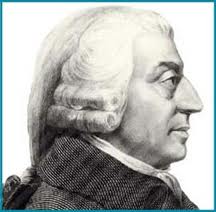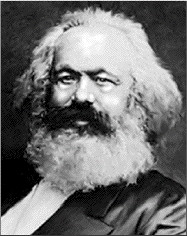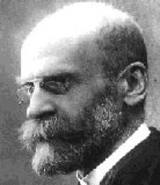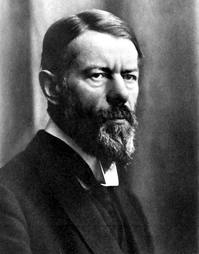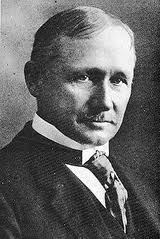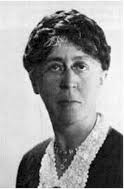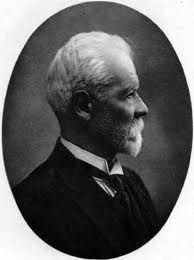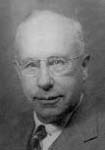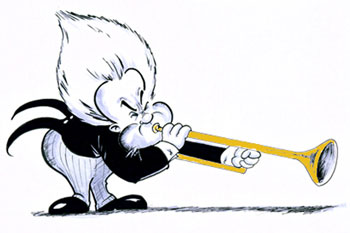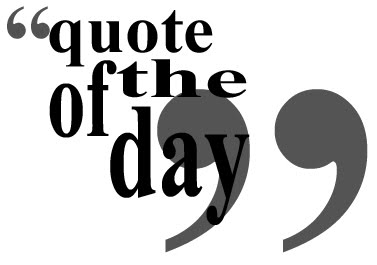Class Session 2
Class Session 2
Melinda, Anne, Marylou, Austin, Aimee
Table of Contents
Topic Overview:
Viewing Organizations as Machines, this week's topic focused on how to design organizations utilizing frames. The structural frame aims to maximize job performance and end organizational goals through optimal frame design. The structure of an institution determines how it is configured to do work and the type of goverance hierarchies that exist. Structure can influence policies, processes, culture, governance, information, and investment in infrastructures. There is no single best way to organize. The right organizational structure depends on a variety of factors including the organization's goals, strategies, technology, people, and environment. Examining the variety of design possibilities can assist organizations in creating a tailored structure that works towards, rather than against, people and purposes.
Summary of Readings:
Bolman and Deal - Chapter Three - Getting Organized (pp. 45 - 69)
Core Premise of Structural Lens: clear, well-understood goals, roles, and relationships and adequate coordination are essential to organizational performance (p.46).
Structural Assumptions (p. 47)
Structural frames reflect a belief in rationality and a faith that a suitable array of formal roles and responsibilities will minimize distracting personal static and maximize people's job performances. Structural perspective argues for putting people in the right roles and relationships. Properly designed, these formal arrangements can accommodate both collective goals and individual differences.
Six structural frame assumptions:
| 1. |
Organizations exist to achieve established goals and objectives. |
| 2. |
Organizations increase efficiency and enhance performance through specialization and appropriate divisions of labor. |
| 3. |
Suitable forms of coordination and control ensure that diverse efforts of individuals and units mesh. |
| 4. |
Organizations work best when rationality prevails over personal agendas and extraneous pressures. |
| 5. |
Structures must be designed to fit an organization's current circumstances (including goals, technology, workforce, and environment). |
| 6. |
Problems arise and performance suffers from structural deficiencies, which can be remedied through analysis and restructuring. |
Intellectual Roots of Structural Perspective (p.48)
Frederick W. Taylor (1911): Founder of Scientific Management. Broke tasks down into their most minute components to allow each individual action to be as efficient and regulated as possible.Other contributing theorists include: Fayol, Urwick, Gulick and Urwick.
Max Weber: Monocratic Bureaucracy - Ideal form that maximized norms of rationality. Included a fixed division of labor, a hierarchy of offices, a set of rules governing perfomrace, a separation of personal from official property and rights, the use of technical qualifications and employment as primary occupation and long-term career. In the 1960's and 70's, the bureaucratic model was rediscovered and researched by theorists including: Blau and Scott, Perrow, Thompson, Lawrence and Lorsch, and Hall.
Structural Forms and Functions (p. 50).
Serves as a blueprint for sanctioned expectations and exchanges:
1. Internal Players - Executives, Managers, Employees
2. External Constituencies - Customers, Clients
Also can either enhance or constrain the organizations accomplishments.
Adler and Borys (1966) - argue that structure is as important as the amount or rigidity.
Ex: United Parcel Service - formal structure enhances morale, if it aids workers in completing their tasks. UPS's mechanized system creates "happy robots".
Basic Structural Tensions (p.52)
There are two central issues to structural design: how to allocate work (differentiation) and how to coordinate diverse efforts once responsibilities have been divided (integration).
Allocating tasks is the keystone to structure.
Ex: Ant Colony - division of labor. Utilizes specialization to accomplish tasks.
Once organizations identify roles or positions, managers must decide how to group people (Minzberg, 1979), (p. 53).
1. Functional groups based on knowledge or skill
2. Units created on the basis of time, as in shift
3. Groups organized by product
4. Groups established around customers or clients
5. Groupings around place or geography
6. Groupings by process: a complete flow of work (e.g., "the order fulfillment process which flows from initiation by a customer order, through the functions, to deliver to the customer" (Galbraith, 2001, p. 34)
Suboptimization: placing emphasis on achieving unit goals, rather than focusing on the overall mission.
Vertical Coordination (p. 54)
A method of coordination in which higher levels control the work of subordinates through authority, rules, policy, planning and control systems.
Authority: the most basic way to harmonize efforts of individuals, units, or divisions is to designate a boss with formal authority.
Rules and Policies: limit individual discretion and ensure that behavior is predicable and consistent.
Standard Operating Procedures (SOPs): reduce variance in routine takes that have little margin for errors. Can fall short in the case of Black Swans - freak surprises that SOPs were not equipped to handle.
Planning and Control Systems (p.56)
Mintzberg (1979) identifies two major approaches to control and planning:
Performance Control - Imposes concrete outcome objectives (increasing sales)
Action Planning - Specifies methods and time frames for decisions and actions (sales pitch to increase sales)
Lateral Coordination (p. 56)
Techniques include formal and informal meetings, task forces, coordinating roles, matrix systems, and networks. Usually less formal and more flexible and simpler in function than authority-bound systems.
Matrix Structures: a matrix with business or product lines on one axis and countries and regions on antother
Networks: typically supplant various vertical strategies and spur the development of new network structures within and between organizations.
Designing a Structure that Works (p.59)
Managers have options for dividing up the works and coordinating efforts. Structural systems should be chosen based on desired outcomes.
Basic Structural Options (exhibit 3.1, p.60)
Division of Labor: Options for Differentiation - Function, time, product, customers or clients, place, process
Coordination: Options for Integration - 1. Vertical - authority, rules and policies, planning and control systems. 2. Lateral - meetings, task forces, coordinating roles, matrix, networks.
Vertical or Lateral? (pp.59-60)
Vertical - top-down command and control and depends on employees willingness to follow directives.
Lateral - needed for fast-changing environments where initiative and creativity are key.
Structural Imperatives (p. 62)
Comparison between structural needs of Harvard University and McDonald's.
(exhibit 3.2, p. 63)
| Dimension |
Structural Implications |
| Size and Age |
Complexity and formality increase |
| Core Process |
technologies must align with structure |
| Environment |
stable ones reward simpler structure; turbulent ones require more complex, flexible structure |
| Strategy and Goals |
variation in clarity and consistency of goals requires appropriate structural adaptations |
| Information Technology |
permits flatter, more flexible and more decentralized structures |
| Nature of the Workforce |
more educated and professional workers need and want greater autonomy |
Morgan Chapter 2 - Mechanization Takes Command (pp. 11 – 33)
The entire idea of organizations as machines takes us back to the origins of the word organization. It originates from Greek word organon, meaning tool or instrument. From the beginning there was the idea that organizations are tools, they have a specific purpose or function. The concept of organizations as machines takes that concept even further by focusing on precision and efficiency. (pp. 15)
Quick History (pp. 16-18)
Adam Smith in The Wealth of Nations (1776) extolled the virtues of division of labor , featuring a specialized labor force and resulting in increased efficiency.
Frederick the Great of Prussia who ruled from 1740-1786 used the philosophy of organizations as machines in reforming the military. He standardized many military processes and instilled fear of officers in the soldiers.
Max Weber provided one of the first definitions of bureaucracy - “a form of organization that emphasizes precision, speed, clarity, regularity, reliability, and efficiency achieved through the creation of a fixed division of tasks, hierarchical supervision, and detailed rules and regulations.”
Weber also had a keen Interest in the social consequences of bureaucratization. He was troubled by the impact of mechanization on the human side of society, particularly the routinization and mechanization all aspects of life. Particularly Weber indicated that this mechanization of life would stand in the way of democracy.
Classical Management Theory (pp. 18-22)
A method for designing an organization like a machine with a pattern of precisely defined jobs organized in a hierarchical manner through precisely defined lines of command or communication.
Some qualities of organizations according to Classical Management Theory:
- Each individual has one supervisor to whom they report
- There is a clear chain of command that is followed and resulting in a centralized power
- Supervisors have power and authority over their supervisees
- Workers are subordinate to their supervisor
- Each supervisor does not have too many supervisees, thus allowing them to be effective managers
- Work is specialized and there is a clear division of work with each individual having a specific task
- Discipline systems are utilized when workers are not compliant
One of the major assumptions of Classical Management Theory is that organizations are entirely rational systems, that the human components are technical pieces of a larger body. There is minor recognition of the human factors (leadership, innovation, etc.) but the entire focus is on using human labor as technical parts within the organization.
Scientific Management (pp.22-26)
Devised by Frederick Taylor an American engineer and considered the “enemy of the working man,” scientific management is a theory focusing on establishing efficiency within organizations. Scientific management is centered on five key principles that are readily evident in contemporary organizations.
Five principles
- 1. Shift responsibilities from workers to managers. Managers plan everything for their workforce in explicit detail. All workers have to do is implement the plans.
- Example: This sign demonstrates exactly how each McDonald’s breakfast sandwich needs to be put together. Management have determined exactly what should happen and all that the staff need to do is put it together.
- 2. Use scientific method to determine the most effective way of doing each job. Companies try to figure out the best way to get the job done.
- 3. Select the best worker for the job. Each job is highly specialized, so pick the person that can best do that individual portion of the entire process.
- 4. Train workers to do task efficiently. Provide them with the learning they need to be able to do their jobs well.
- 5. Monitor performance regularly. Use extremely specific criteria.
- Example: The rubric for workers at a fast food restaurant (pp. 14-15) indicates specific things employees should do or say throughout the process of serving a customer.
Taylor’s concept has been extended to allow companies to establish franchises. Companies have specific guidelines for each new store/restaurant/office. The practices that are followed in those new establishments reflect those of the overall organization.
One of the biggest downsides to the Scientific Management theory is the “separating hand from the brain.” Taylor would tell his workers “You are not supposed to think. There are other people paid for thinking around here.” In essence his workers were interchangeable, simply parts in a machine that could be trained to do a specific task in the most efficient way possible.
Strengths and Limitations of Organizations as a Machine (pp. 26-33)
| Strengths |
Limitations |
| System works well in situations where machines work well |
System only works well in situations where machines work well |
| Explicitly defined roles and responsibilities |
Cannot easily adapt to change in conditions |
| Ensures efficiency of productivity |
No flexibility built into the system |
| Ensures that the same product is produced routinely |
Segmented workforce due to the division of labor leads to inability to react to problems. |
| Precision is ensured in production |
System results in bureaucracy with employees who do little thinking and only doing |
| Employees need only simply training because of the specific roles and responsibilities of each job |
Dehumanizing employees, making them simply a cog within a machine |
| Clear lines of communication |
Institutional passivity, apathy, and carelessness because employees are not invested in organizational goals |
| Organizational vacancies are easy to fill |
No growth for employees who have their own individual goals |
| Worker error inherently built into the system |
Hatch (2006) A Brief History of Organizational Theory
Organizational theory did not emerge as a recognized discipline until the 1960s.The table below highlights a few important scholars whose works form the prehistory of organizational theory.
| Theorist |
Nationality Title(s) |
Major Contributions to Organizational Theory | |
| Adam Smith |
Scottish Political Economist |
1776 -The Wealth of All Nations -used pin manufacturing to describe division of labor and economic efficiancy | |
| Karl Marx |
German Philosopher-Economist Revolutionary |
-best known for his theory of capital and ideas of the exploited worker -managerial control is imposed when the capitalists increase profits by pressuring laborers to be more efficient, lowering production costs -this drive for efficiency leads to alienation (disenfranchising) of workers | |
| Emile Durkheim |
French Sociologist |
1893-The Division of Labor in Society 1895-The Rules of Sociological Method -describes structural shift (specialization, heirarchy, interdependent tasks)resulting from industrial revolution -proposed distinction between informal organization (attention to workers' social needs) and formal organization (formally organizing work) -exposed tensions between humanistic and economic aspects of organizing -establishes sociology as a scientific discipline through his development of objective research methods -helped lay positivistic (Bess and Dee) foundations for organization theory | |
| Max Weber |
German Sociologist |
1924-The Theory of Social and Economic Organization -before industrialization, societies organized around traditional or charismatic authority -industrialization created a third form of authority; rational-legal authority which is bestowed based on rules and legally binding procedures -his theory of bureaucracy centers on authority and rationality -use of rationality relies on value-based criteria such as formal rationality (measuring efficiency through calculations) and substantive rationality (using desired ends to drive the uses of calculations) -a new look at "value-based" criteria: Traditional vs Value-Based Leaders | |
| Frederick Taylor |
American Engineer |
-affectionately known as the "enemy of the working man" (Morgan) -developed the system of scientific management incorporating methods of efficiency and productivity of factories, work standards, uniform work methods, skill-based job placement, methods of supervision and incentive schemes -use time and motion study to analyze and standardize work activities (Morgan) -promoter of rationaization in organizations | |
| Mary Parker Follett |
American Scholar, Social Reformer, Goverment Management Consultant |
1924-Creative Experienc -proposed management theory based on principles of self-government to encourgage growth of individuals and groups through interaction focused on achieving their common goal -proposed workplace democracy (nonhierarchical network of self-governing groups) -organizations within a democratic society should embrace democratic ideal; power with not power over people | |
| Henri Fayol |
French Engineer, CEO, Administrative Theorist |
1949-General and Industrial Management -presents his principles for rational adminstration of organizational activities -his Principles of Classical Management Theory provide the foundation for management theory (Morgan) -principles revolve around unity of command, scalar unit, span of control, staffa dnline, initiative, division of work, authority and responsibility, centralization, discipline, subordination, equity, stability, esprit de corps (Morgan) | |
| Luther Gulick |
American Administrative Theorist |
-built on Fayol's theory, he clearly divides work into small, specialized segments with supervision and clear task definition, instruction and direction -best known for mnemonic 'POSDCoRB: Planning,Organizing, Staffing, Directing, C'oorinating, Reporting, Budgeting | |
| Chester Barnard |
American Executive and Management Theorist |
1938-The Functions of the Executive -extends Durkheim's ideas to management theory -states that managing the informal organization is a key function of successful executives -encourages cooperative social systems by focusing on integration of work efforst through communication of goals/attention to worker motivation (like Follett ideas) -his focus on the informal organization foreshadowed the participant-observation studies used to establish the symbolic-interpretive perspective |
|
|||
|---|---|---|---|
| Historical Background |
Beliefs |
Theories/Concepts | |
| Modern |
|
|
|
| Symbolic Interpretive |
|
|
|
| Post Modern |
|
|
|
Toma (2010)
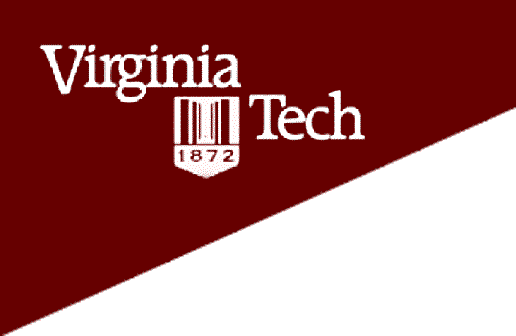 VT and Structure
VT and Structure
New math emporium structure fits the mission of the research university and the desire to enhance efficiency within the institutional culture. It was a collaboration between the VT central administration and the mathematics department.
Shows the diffusion of power in institutions, how there can be a mix of flat and bureaucratic structures, and how relative autonomy can create resistance within structures
Applied strategic management framework
- problems include faculty directed program with a noticeable shortage of formal policies and
internal functioning
-work best if the development and operation of structure/operation have been defined effectively
-infrastructure at VT reflected to accommodate struggles
Structure-how an institution is configured to do its work (Toma, 2010).
-organization chart, means of organization
-bridges differences inside and outside organizations
- strategic management- do the configurations that serve the mission and aspirations of the institutions to the fullest extent possible
-structure is the most tangible of elements, thus restructuring is very common as an initial activity in organizational change
-An institutions culture may determine the structure and institutional purpose/goals—incorporating both the horizontal and vertical connections with other aspects of the institutions
Cultural View -looks on how those inside an organization make sense of organization and structure
-looks more at the behavioral, informal aspects of the institutions
-Bureaucracy in organizations assume that there is rationality within the organizations—i.e. organizational charts and hierarchies
-Structure can influence policies, processes, culture, governance, information, and investment in infrastructure.
VT- Math Emporium Example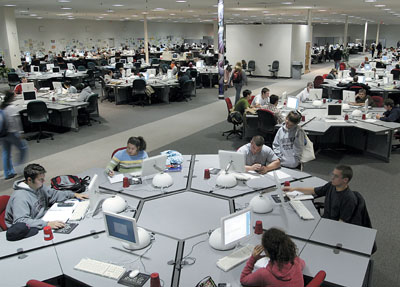
-Built in 1997, large room with pods -8 computer stations each, Macs, online testing, meet only once for orientation, unlimited supply of practice questions (Here's the Empo)
-This summaries what the empo offers
-Institution wide commitment to project
-The initiative to create the Empo aligned with the mission and aspiration of the university
-innovation—the increase in technology
-responsibility for learning is on students not professors
-shows how state level policy influences institutional level change – state budget cuts coupled with decreasing restrictions on state universities
-greatest challenge of math emporium was the huge amount of autonomy (lack of formal goverance) – but once it was established it became part of the organizational structure. A few non tenure track faculty run the math emporium. Questions regarding the policies of the emporium are typically decided in an formal way, due to the creation of emporium.
Where the structure is in the institution determines how the governance is determined
-math emporium affects structure at college- by changing expectations of math related courses and professors and by creating a surrounding culture related to the math emporium itself
Is the Math Emporium really helpful? The Math department thinks so, but hear what actual students have to say!
Class Summary
Class Exercise: Each member was asked to draw their concept of organizational structure. Some chose to depict their ideal structures, while others drew pictures of machines or robots, depicting "real-life" situations in their offices. We were encouraged to consider leadership, form, function and communication as we formulate our organizational structures.
This short exercise allowed us to consider questions surrounding organizational structure, such as:
"What's more important, vertical coordination or lateral coordination?"
"What assumptions do we apply when we view an organization? How can I start removing my assumptions/pull away from them?"
Class Discussion
| Mike Mullins: "I haven't seen that movie."Class response: "Whhhhhaaaattttt!" | |
| Here are some more clips from films |
that highlight concepts discussed in class. |
|
|
|
Terminology: quick reference to important terms
Further Reading:
| Apple Organizational Structure Organizational Shift (from rational to open systems) VA Higher Education Restructuring Act How other universities modify emporium structure to fit their structure |
